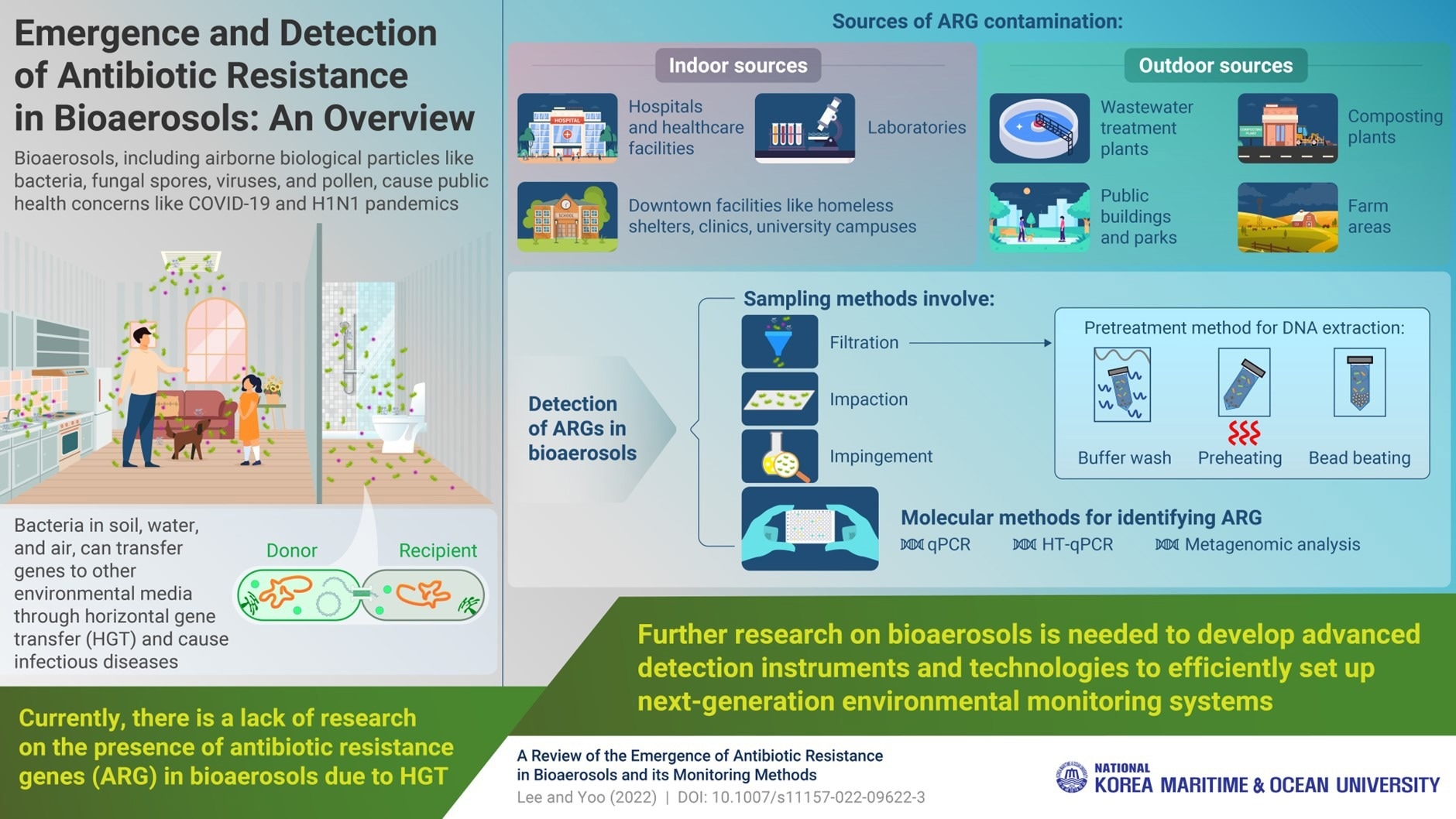While there are many studies that discuss antibiotic resistance genes (ARG) in soil and water environments, there is currently very little research that focuses on ARG in aerial environments. In a recent review, researchers from South Korea have analyzed current research trends regarding ARG in bioaerosols, including their sources, methods of detection, and implications for the future.

Image Credit: National Korea Maritime & Ocean University
Bioaerosols, or airborne biological particles containing viruses, fungal spores, bacteria, and pollen, play a key role in public health. Antibiotic resistance (AR), caused by antibiotic resistance genes (ARGs), could potentially cause global public health crises owing to horizontal gene transfer between same or similar bacterial bioaerosols. AR in microbes in soil and water environments have been extensively studied using latest molecular and biotechnological methods; however, studies investigating antibiotic-resistant bioaerosols in aerial ecosystems are limited. The key problem in studying AR in bioaerosols is the difficulty in obtaining sufficient quantities of bioaerosols for analyses.
To shed more light, Assistant Professor Dr. Keunje Yoo and his colleague at Korea Maritime and Ocean University have collated existing knowledge on ARG in bioaerosols in a comprehensive review published in Reviews in Environmental Science and Bio/Technology. Explaining the motivation behind this article.
We wanted to understand the driving force behind ARG in bioaerosols. We extensively reviewed data on the potential risk factors associated with AR in bioaerosols, their impact on human health, appropriate methodologies, and the latest technologies and advances in bioaerosol monitoring.”
Dr. Keunje Yoo, Assistant Professor, Korea Maritime and Ocean University
So, what did they learn? Antibiotic-resistant bioaerosols are produced from several sources, categorized into either indoor or outdoor environments. Indoor environments include hospitals, healthcare facilities, laboratory buildings, and downtown facilities like offices, markets, universities, and kindergartens. The best way to detect these bioaerosols is through impaction, impingement, and filtration. Molecular and biotechnological methods including quantitative real time PCR (qPCR), high throughput qPCR, and high throughput sequencing techniques are also employed to evaluate the prevalence and levels of ARG in samples.
The World Health Organization has announced that the spread of AR is among the top ten global public health concerns facing humanity. It becomes essential to analyze the relationship between human, animal, and environmental microbiomes to counter the spread of AR.
By identifying which bacteria generate and transfer AR and by understanding the interaction between host cells, environment, tissues, and pathogens at a molecular level, we move a step closer to finding targets in managing AR in the environment.”
Dr. Keunje Yoo, Assistant Professor, Korea Maritime and Ocean University
Source:
Journal reference:
Lee, G & Yoo, K. A., (2022) A review of the emergence of antibiotic resistance in bioaerosols and its monitoring methods. Reviews in Environmental Science and Bio/Technology. doi.org/10.1007/s11157-022-09622-3.